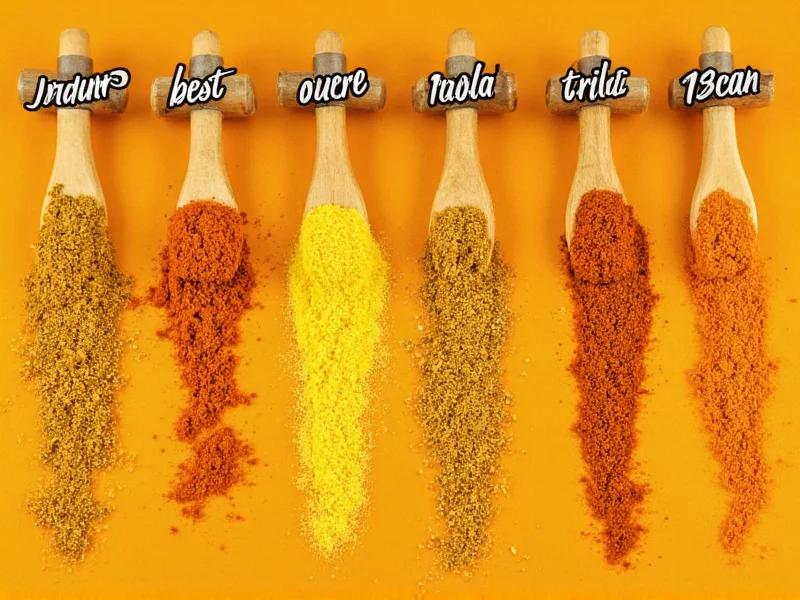Running out of turmeric mid-recipe can be frustrating, but several effective substitutes can save your dish. Whether you need to replace turmeric for its distinctive golden color, earthy flavor, or both, understanding your cooking goals helps choose the right alternative. This guide explores practical turmeric replacements with specific ratios and usage tips to maintain your recipe's integrity.
Why Substitute Turmeric?
Turmeric serves dual purposes in cooking: providing vibrant yellow-orange color and contributing earthy, slightly bitter flavor with peppery notes. When seeking what spice can i substitute for turmeric, consider whether you primarily need to replicate the color, the flavor profile, or both. Many substitutes excel at one aspect but not the other, so matching your substitution to your recipe's requirements yields the best results.
Top Turmeric Substitutes for Color
When your recipe relies on turmeric mainly for its signature golden hue, these color-focused alternatives work best:
Saffron
The most expensive but effective color substitute, saffron delivers a similar golden-yellow hue. Use only a few threads (about 1/8 teaspoon ground saffron) per teaspoon of turmeric. Saffron has a distinct floral flavor, so it works best in rice dishes, paella, or sauces where its unique taste complements other ingredients. Best for: delicate dishes where flavor won't dominate.
Paprika
Provides a warm orange-red color rather than pure yellow, but works well in many applications. Use 1/4 to 1/2 teaspoon paprika per teaspoon of turmeric. Sweet paprika offers milder flavor while smoked paprika adds depth. Best for: soups, stews, and meat rubs where color matters less than in pale sauces.
Annatto
Also known as achiote, this seed provides vibrant yellow-orange color with minimal flavor impact. Use 1/4 teaspoon annatto powder per teaspoon of turmeric. Dissolve in oil first for even distribution. Best for: cheese, rice dishes, and Latin American cuisine where authentic color is crucial.
| Substitute | Color Match | Flavor Impact | Ratio (vs 1 tsp turmeric) |
|---|---|---|---|
| Saffron | ★★★★★ | Moderate (floral) | 1/8 tsp |
| Paprika | ★★★☆☆ | High (smoky/sweet) | 1/4-1/2 tsp |
| Annatto | ★★★★☆ | Low | 1/4 tsp |
| Mustard Powder | ★★★☆☆ | Moderate (tangy) | 1/2 tsp |
Top Turmeric Substitutes for Flavor
When turmeric's earthy, slightly bitter flavor is essential to your dish, consider these alternatives:
Curry Powder
The most practical substitute since it typically contains turmeric plus complementary spices. Use 1 teaspoon curry powder for every 1/2 teaspoon turmeric. Note that curry powder varies by blend, so taste as you go. Best for: curries, marinades, and dishes where complex spice profile enhances the recipe. This addresses the common query about what can i use instead of turmeric in curry.
Ginger
Fresh or ground ginger shares turmeric's earthy notes with added warmth. Use 1/2 teaspoon ground ginger per teaspoon of turmeric. Fresh ginger requires grating (1 tablespoon fresh = 1/4 teaspoon ground). Best for: stir-fries, teas, and recipes where spicy warmth complements other flavors.
Mustard Powder
Provides similar earthy notes with tangy complexity. Use 1/2 teaspoon mustard powder per teaspoon of turmeric. Works particularly well in cheese sauces, dressings, and pickling recipes. Best for: dishes where slight tang enhances flavor profile without overpowering.
Special Considerations for Turmeric Substitution
When exploring what spice can replace turmeric, keep these factors in mind:
- Health Benefits: Turmeric contains curcumin, associated with anti-inflammatory properties. Most substitutes don't provide equivalent health benefits, though ginger offers some similar properties.
- Allergies: Those avoiding turmeric due to allergies should confirm substitutes don't contain turmeric (common in curry blends).
- Cultural Authenticity: Traditional Indian or Southeast Asian dishes rely on turmeric's specific flavor. Substitutes may alter authenticity, though curry powder maintains some cultural relevance.
- Color Stability: Some substitutes like paprika fade with prolonged cooking, while turmeric's color remains stable.
Practical Substitution Tips
For best results when you need what to use if you don't have turmeric:
- Combine substitutes for balanced color and flavor (e.g., pinch of saffron + ginger for color and earthiness)
- Add gradually and taste frequently, especially with potent substitutes like saffron
- Consider the dish type: Use color-focused substitutes in pale sauces; flavor-focused options in robust stews
- Adjust other seasonings: Compensate for missing bitterness with black pepper or slight acid
- Store properly: Most substitutes maintain quality for 6-12 months in airtight containers away from light
When Substitution Isn't Recommended
Some recipes rely so heavily on turmeric that substitutes significantly alter the dish. Traditional Indian haldi doodh (turmeric milk), certain medicinal preparations, and authentic curry blends may not achieve desired results with alternatives. In these cases, consider making a special trip for turmeric or finding a recipe specifically designed without it.











 浙公网安备
33010002000092号
浙公网安备
33010002000092号 浙B2-20120091-4
浙B2-20120091-4